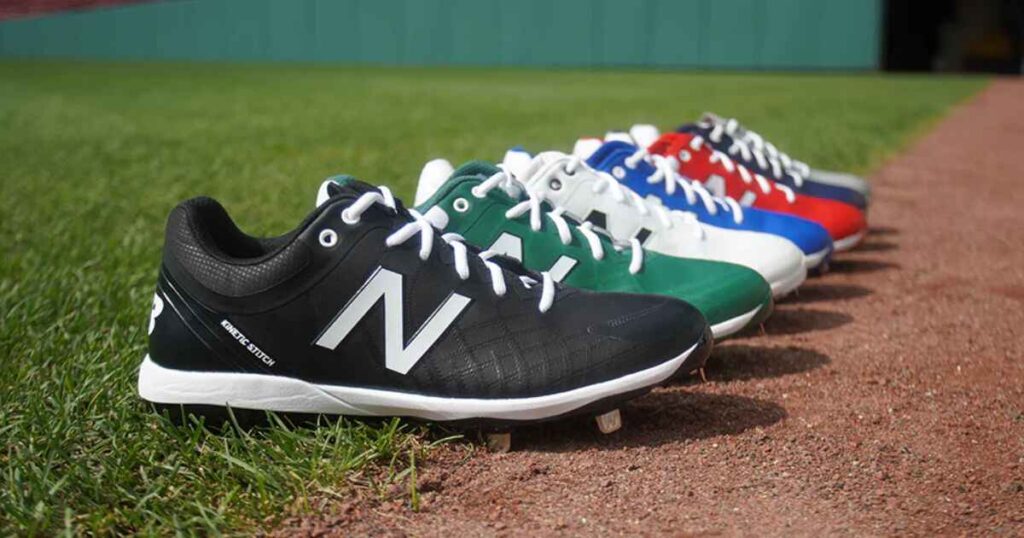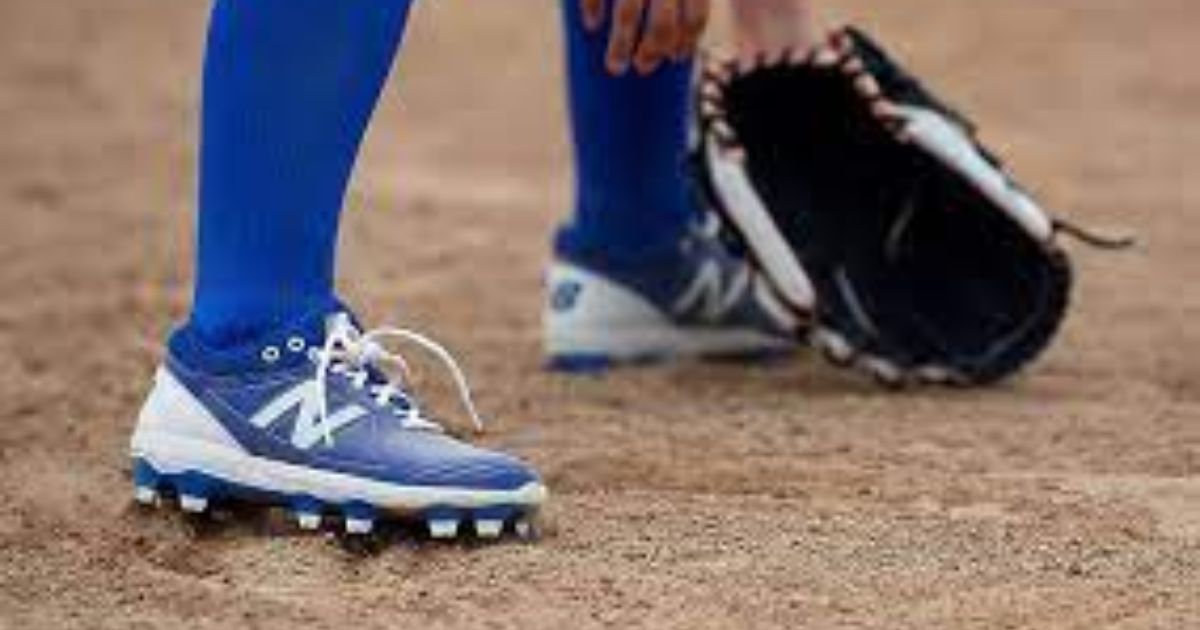Cleats for softball are specialized athletic footwear designed for playing softball. These shoes feature molded or metal spikes on the sole to provide traction and stability on the field. Softball cleats are crucial for players to maintain grip while running, fielding, and making quick movements during the game. They are tailored to the specific needs of softball players, ensuring optimal performance on the diamond.
Do you need cleats for softball? The answer is a resounding yes! You’re a seasoned player or a beginner, investing in the right pair of softball cleats can significantly enhance your gameplay. The right cleats not only provide traction on the field but also offer comfort and support, reducing the risk of injuries.
Cleats for softball come in various styles and designs, catering to different player preferences and positions. Some have metal spikes for superior traction, while others feature molded spikes for durability and versatility. The choice between metal and molded spikes depends on the player’s preference, the type of field they play on, and league regulations. In this article, we’ll explore the importance of cleats for softball and guide you in selecting the perfect pair to elevate your game.
Importance of Footwear in Softball
In the sport of softball, the sizing of softball cleats is crucial. Note that softball cleats run small, so ensure a proper fit for optimal performance and foot comfort during dynamic movements like running, sliding, and quick changes in direction.
The right footwear, particularly cleats designed for softball, plays a crucial role in providing the necessary traction and stability on the field. Softball cleats are specifically designed to grip the turf or dirt, preventing slips and enhancing the player’s ability to make precise movements.
Choosing the Right Cleats for Softball
Selecting the right cleats for softball involves considering various factors to match the player’s specific needs and preferences. Firstly, the type of playing surface must be taken into account, as different cleat designs cater to different field conditions. For example, molded cleats are suitable for turf or harder surfaces, while metal cleats provide excellent traction on dirt fields.
Ankle support is another critical factor, especially for players prone to ankle injuries. Considering the player’s position on the field can influence the choice of cleats; for instance, pitchers may prefer low-cut cleats for better mobility, while outfielders might opt for mid-cut or high-cut cleats for added ankle support during quick movements.
Softball Cleats Explained
Softball cleats play a dual role in enhancing both safety and performance on the field. Safety comes to the forefront as cleats provide a secure grip, minimizing the risk of slips and falls during sudden movements. This is particularly crucial in a sport like softball, where quick changes in direction and rapid acceleration are common.
The traction provided by cleats ensures that players can confidently navigate the field without fear of losing their footing.On the performance front, softball cleats contribute significantly to a player’s agility and speed. The design of the cleats allows for efficient energy transfer from the player’s legs to the ground, enabling quicker sprints and more precise movements.
Understanding Softball Field Conditions and Footwear
Softball fields vary in surface conditions, ranging from grass to turf or a combination of both. Understanding these field conditions is paramount in choosing the appropriate footwear for optimal performance. For instance, molded cleats, with their rubber or hard plastic studs, are well-suited for artificial turf or hard ground, providing excellent traction without causing damage.
On the other hand, metal cleats, with their sharp spikes, are better suited for natural grass fields, offering superior grip in soft or muddy conditions. The maintenance of the playing surface is a crucial factor. Cleats that are well-matched to the field conditions not only optimize performance but also contribute to the longevity of the cleats themselves.
Benefits of Using Cleats in Softball Games
The benefits of using cleats in softball extend beyond mere traction and stability. One notable advantage is the enhanced ability to make quick and controlled movements, essential for both offensive and defensive plays. Cleats provide a level of grip that regular athletic shoes simply cannot match, allowing players to dig into the dirt when sprinting, pivot with precision, and make sharp turns with confidence.
This level of agility becomes a game-changer, especially when stealing bases, tracking down fly balls, or executing strategic defensive maneuvers. The design of softball cleats often includes features that promote comfort during extended periods of play. Cushioned insoles and breathable materials contribute to reduced fatigue and help players maintain peak performance throughout the game.
Types of Cleats Suitable for Softball Players

Softball players can choose from a variety of cleat types, each designed to cater to specific needs and playing conditions. Molded cleats, featuring rubber or plastic studs, are ideal for hard, dry fields and provide excellent grip without causing damage to the playing surface.
Metal cleats, with their sharp spikes, are preferred for natural grass fields, offering superior traction in softer or wet conditions. Turf cleats, characterized by small, rubber studs, are suitable for artificial turf surfaces, providing sufficient grip without excessive traction.
Comparing Cleats and Other Footwear Options in Softball
When considering footwear for softball, players often face the dilemma of choosing between cleats and alternative options. While athletic shoes may seem like a viable choice, especially for casual play, they lack the specialized features that make cleats essential for optimal performance on the softball field.
Cleats provide a unique combination of traction, stability, and support that is specifically tailored to the dynamic movements involved in the sport. Compared to regular athletic shoes, cleats offer superior grip, allowing players to maintain control during rapid movements.
The stud or spike configuration of cleats is designed to dig into the ground, preventing slips and ensuring a firm footing, particularly in situations where acceleration or deceleration is crucial. This advantage becomes especially apparent on wet or uneven surfaces, where cleats outperform standard athletic footwear.
How Cleats Impact Softball Performance
The impact of cleats on softball performance is multi-faceted, influencing various aspects of a player’s game. The most apparent effect lies in improved traction, which allows players to execute explosive movements with precision. Whether sprinting to make a play, sliding into a base, or fielding a ball, the enhanced grip of cleats translates to increased speed and agility, giving players a competitive edge.
Beyond traction, cleats contribute to overall player confidence. Knowing that their footwear is specifically designed for the demands of the game, players can focus on strategy and execution without concerns about slips or discomfort. The ankle support provided by cleats further bolsters this confidence, reducing the risk of injury and allowing players to push their physical limits during play.
FAQs
Can I play softball without cleats?
While it’s possible, cleats are recommended for safety and optimal performance, especially on the grass or dirt surfaces of a softball field.
Are there specific cleats for softball?
Yes, there are softball-specific cleats designed with features to enhance lateral movements and provide comfort during the game.
Can I use soccer cleats for softball?
While possible, it’s better to use softball cleats as they are designed to handle the specific movements and conditions of the softball field.
Are metal cleats allowed in softball?
Metal cleats are generally not allowed in softball, as most leagues prefer or require non-metal alternatives for safety reasons.
Conclusion
The necessity of cleats for softball largely depends on the player’s preferences, position, and the playing surface. While some players may find cleats essential for better traction, especially when playing on grass or dirt fields, others may opt for turf shoes or sneakers on artificial surfaces.
The decision to use cleats in softball is a personal one, influenced by factors such as playing style, field conditions, and individual comfort. It is advisable for players to consider their specific needs and the characteristics of the playing environment to determine whether cleats are a beneficial addition to their softball gear.








